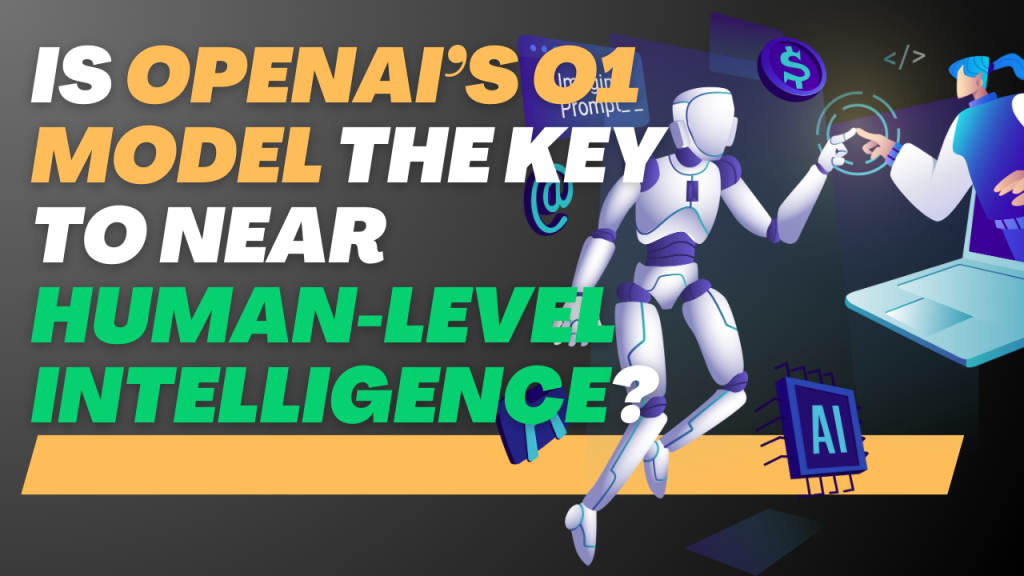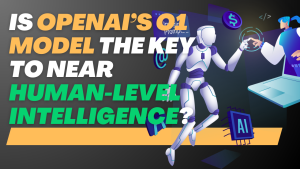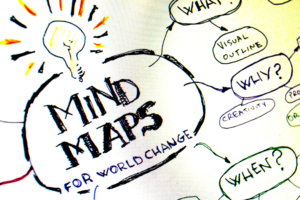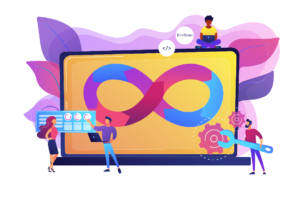OpenAI has made big advances in artificial intelligence, pushing the limits of machine capabilities. Its new o1 model has sparked interest, raising a key question: is OpenAI nearing human-level intelligence? The o1 model, designed for complex reasoning tasks, could be a game-changer. But can it truly replicate human thought, or are we still far from that reality?
This article explores how OpenAI’s o1 brings us closer to human-level intelligence and what that means for AI’s future.
The Evolution of AI: From GPT-4 to o1
OpenAI has been at the forefront of AI development for years, consistently advancing the capabilities of its models. The company’s earlier models, like GPT-3 and GPT-4, were groundbreaking in their ability to understand and generate human-like language. However, these models were primarily reactive, generating responses based on existing data rather than employing complex reasoning.
The Limitations of Previous Models
While GPT-4 was a remarkable achievement, it had limitations. The model was excellent at handling conversational tasks and creative writing but struggled with tasks requiring deep reasoning, such as solving complex math problems or debugging code. GPT-4 could excel in general knowledge but could not break down intricate challenges, often leading to shallow responses for more complex queries.
What Sets o1 Apart?
The o1 series represents a shift in OpenAI’s approach to AI development. Rather than focusing on quick responses, o1 is designed to spend more time thinking, mimicking how humans approach complex problems. By employing what OpenAI calls “chain of thought” reasoning, o1 can break down difficult problems into smaller, manageable steps, evaluate different strategies, and correct mistakes.
This marks a significant departure from previous models, where the focus was on generating fast, fluent responses. Instead, o1 takes a more deliberate, thoughtful approach, allowing it to tackle complex tasks like physics problems, advanced coding challenges, and mathematical reasoning. This leap in AI reasoning ability raises an important question: is this a step toward human-level intelligence?
Defining Human-Level Intelligence in AI
Human-level intelligence, or artificial general intelligence (AGI), means an AI can understand, learn, and apply knowledge across various tasks like a human. Achieving AGI has been the ultimate goal in AI research, but it remains a significant challenge.
What Makes Human-Level Intelligence Unique?
Human intelligence includes traits like reasoning through complex problems, learning from mistakes, adapting to new situations, and creatively applying knowledge. While narrow AI excels in specific tasks, AGI must solve a broad range of problems without pre-programming.
A human-level AI would not only excel at technical tasks but also understand context, emotions, and social cues—areas where current models fall short. Can o1 close this gap?
The Role of o1 in Achieving AGI
While o1 is still far from AGI, its enhanced reasoning capabilities show promise in tackling more complex tasks that were once beyond AI’s reach. The model has already demonstrated its potential by outperforming its predecessors in areas like science, coding, and math. For instance, in the International Mathematics Olympiad (IMO) qualifying exam, o1 correctly solved 83% of the problems, compared to GPT-4o’s 13%. Such improvements in reasoning bring OpenAI closer to building an AI that can mimic human thought processes.
However, human-level intelligence requires more than just reasoning. It also demands an understanding of context, abstract thinking, and adaptability across a broad spectrum of tasks. While o1 represents a significant leap forward, it’s not yet capable of the wide-ranging cognitive abilities needed for AGI.
How o1 Enhances Coding and Problem-Solving
One area where o1 truly shines is in coding and technical problem-solving. The model’s ability to debug and generate complex code sets it apart from earlier iterations. OpenAI also released the o1-mini, a smaller, faster, and more affordable version of the model designed specifically for developers.
The Power of o1 in Code Generation
O1’s coding abilities were tested in Codeforces competitions, where it reached the 89th percentile an impressive feat for an AI model. Developers can use o1 to tackle complex multi-step workflows, debug code, and generate accurate solutions to technical challenges. This is particularly useful in industries where speed and precision are critical, such as software development and engineering.
Why o1-Mini Is a Game-Changer for Developers
While o1-preview excels at reasoning, it comes with high computational costs. Recognizing the need for a more efficient solution, OpenAI introduced o1-mini, a model that offers 80% cost savings compared to the o1-preview. Despite its smaller size, the o1-mini is particularly effective at solving coding problems, making it accessible to developers who need reasoning capabilities but don’t require the broader world knowledge of the full o1 model.
This affordability and efficiency make o1-mini a game-changer for developers, who can now access high-level AI reasoning without the hefty price tag.
Safety and Ethical Considerations in AI Development
As AI models like o1 become more advanced, the importance of safety and alignment grows. OpenAI has implemented a robust safety framework for o1, ensuring that the model adheres to ethical guidelines and minimizes the risks associated with misuse.
How OpenAI Improves Safety with o1
One of the most critical aspects of o1’s safety features is its ability to reason through ethical guidelines. This allows the model to better understand and follow rules, making it more resistant to “jailbreaking” where users attempt to bypass safety protocols. In safety tests, o1 scored 84 out of 100, significantly outperforming GPT-4o’s score of 22. This improvement demonstrates that o1 not only excels at reasoning but also adheres to ethical standards more effectively than previous models.
Collaborating with AI Safety Institutes
OpenAI has partnered with AI Safety Institutes in the U.S. and U.K., giving them early access to o1 for testing. This collaboration ensures the model faces strict safety assessments before its release, adding extra security and accountability.
What’s Next for o1 and the Future of AI?
While o1 is a significant AI advancement, it is still in its early stages. OpenAI plans to refine the model with updates like browsing capabilities, file uploads, and other advanced features to enhance versatility. Additionally, OpenAI will continue releasing models in the GPT series alongside the o1 series, further pushing AI’s limits.
Can o1 Lead to Human-Level Intelligence?
Despite o1’s impressive capabilities, the model still has limitations. It excels at reasoning-heavy tasks but falls short in areas like natural language understanding and creative writing, where models like GPT-4o still have the edge. Achieving human-level intelligence requires versatility across all tasks, not just reasoning.
However, the advancements seen in o1 indicate that AI is getting closer to this goal. By enhancing its ability to think and reason, OpenAI has taken a significant step toward building more intelligent, adaptable machines. While we may not yet be at the point of AGI, o1 provides a glimpse of what the future of AI could hold.
Is Human-Level Intelligence Within Reach?
OpenAI’s o1 model represents a major leap in AI’s ability to reason through complex tasks, offering promising advancements in fields like science, coding, and math. While it’s not yet capable of achieving human-level intelligence, its development brings us one step closer to that goal. With continued innovation and a focus on safety, the future of AI looks increasingly bright.
As OpenAI continues to refine its models, the question remains: how close are we to creating an AI that truly thinks like a human? For now, o1 is leading the way, but the journey toward AGI is far from over.






































